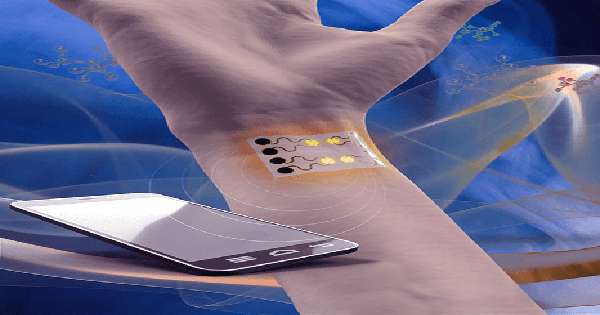Sensors printed directly on the skin have been inching closer to commercial reality in recent years. The dream of highly sensitive sensors could have a wide array of applications, from robotics to medicine, but the field has been limited by its method of circuit printing. Currently, printing circuits directly on the skin requires a lot of heat – something the skin isn’t generally fond of.
Now, researchers believe they may have solved this problem. A team from Penn State University has developed a method of fabricating high-performance circuitry directly on the skin without heat. A soft body area sensor commits to wearable devices to integrate body sensors for network signal conditioner/readout and physiological signal monitoring for wireless transmissions and flexible printed circuit boards (FPCBs). However, its realization depends on various sophisticated imaginary methods such as lithography or direct printing on the carrier substrate before it is currently attached to the body. Here, we report a universal fabricated project to enable the printing of metal nanoparticles on paper/fabric for FPCBs and house-temperature synthesis and directly on human skin for on-body sensors with a novel centering aid layer. The combination of polyvinyl alcohol (PVA) paste and nanomedicines in the water reduces the sintering aid layer. Together with the significantly reduced surface roughness, it allows the integration of submicron-thick conductive patterns with increased electromagnetic performance.
The sinusoidal methods of binding components inside sensors known as sensors require a temperature of about 572 degrees Fahrenheit (300 degrees centigrade) which makes the process incompatible with skin applications. The surface of the skin cannot withstand such high temperatures, obviously, Hanyu Larry Cheng, Dorothy Quigle Professor of Career Development at the Penn State Department, said in a statement. To overcome this limitation, we offer a centering aid layer – something that will not damage the skin and can help the material center together at low temperatures.
It can be recyclable, as the removal does not damage the device, Cheng said. And, importantly, the removal does not harm the skin either. This is especially important for people with sensitive skin, such as adults and children. The researchers say the sensors can monitor temperature, humidity, blood oxygen levels, and heart performance signals" and transmit them wirelessly over a network. But it can only be the tip of the iceberg. Some new devices are already in development or market for monitoring diabetes and neurological disorders. Wanting to use their discovery quickly, Cheng now plans to use adaptive technology to monitor patients with Covid-19 symptoms.















